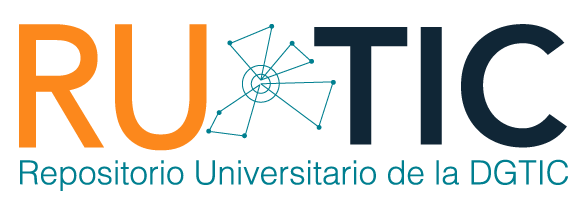| dc.coverage.spatial | MX | |
| dc.date.accessioned | 2018-06-28T05:12:42Z | |
| dc.date.available | 2018-06-28T05:12:42Z | |
| dc.date.issued | 2011-01-01 | |
| dc.identifier.uri | https://ru.tic.unam.mx/handle/123456789/1844 | |
| dc.description | Tema del mes | |
| dc.description.abstract | La familia Cactaceae, originaria del Continente Americano, agrupa a cerca de 2000 especies, las cuales han logrado adaptarse a los climas desérticos. México es el país con mayor riqueza de estas plantas, con 913 taxones, de los cuales el 80 por ciento son endémicos del país. Las zonas desérticas y semidesérticas representadas por los desiertos de Sonora y Chihuahua, las Selvas Bajas Caducifolias y la zona de depresión del Balsas, contienen gran diversidad de cactáceas. Entre las zonas con mayor diversidad en el centro de México, destacan el Valle de Tehuacan-Cuicatlán y la Barranca de Metztitlán. Sin embargo, es alarmante el número de especies de cactáceas mexicanas que se encuentran en alguna categoría de riesgo de extinción. La Norma Oficial Mexicana (NOM- 059-ECOL-200l) enlista 255 taxones, el Libro Rojo de la Unión Internacional para la Conservación de la Naturaleza incluye 65 y la Convención sobre Comercio de Especies Amenazadas de Flora y Fauna Silvestre (CITES), enlista 41 taxones (Apéndice I), y el resto de las cactáceas están consideradas dentro del Apéndice II. Las principales causas de riesgos, son: el cambio de usos del suelo; la introducción de especies exóticas, y la colecta directa de ejemplares. Las cactáceas son elementos importantes en la estructura y la dinámica de las comunidades de las zonas semidesérticas. Su desaparición conlleva a un proceso de empobrecimiento biológico y a la pérdida de recursos útiles para las poblaciones humanas | es_MX |
| dc.description.abstract | The Cactaceae family, which originated in the Americas, comprises close to 2000 species which have adapted to desert climates. Mexico has the greatest richness of these plants, with 913 taxa, 80 % of which are endemic to the country. The Sonora and Chihuahua Deserts, the low deciduous forest and the Balsas River Basin are desert and semidesert regions with a high diversity of cacti. Among the regions with the greatest cactus diversity in central region of Mexico, The Tehuacán-Cuicatlán Valley and the Metztitlán Canyon stand out. That said, an alarming number of Mexican cactus species are currently listed in some category with a risk of extinction. The Official Mexican Standard (NOM-059-ECOL 200l) lists 255 taxa, the International Union for Conservation of Nature’s Red List (IUCN) includes 65 taxa and the Convention on International Trade in Endangered Species (CITES) lists 41 (Appendix I); the other Cactaceae are listed in Appendix II. The main causes of this risk of extinction are: changes in land use, the introduction of exotic species and the illegal collection of specimens. Cacti are important structural elements and play a key role in the community dynamics of semideserts. Their disappearance leads to a process of biological impoverishment and the loss of resources that are useful to people. Considering the risk to which at least 30 % of the Mexican cactus species are currently exposed, protection measures are urgently needed. Suggested measures include the collection and preservation of seeds, growing the cacti in greenhouses for research purposes, re-introducing the species into their natural habitats and the promotion of their legal sale. It has also been suggested that areas of exclusion be set up to prevent both the damage done by livestock and the removal of the plants from their natural environment by people. In addition, training in environmental education is needed to help the local population formulate strategies for the multiple and sustainable uses of their resources | en |
| dc.format | html | |
| dc.format | application/pdf | |
| dc.format.extent | 610.0 KB | |
| dc.format.extent | 1.64 MB | |
| dc.language | spa | |
| dc.publisher | Universidad Nacional Autónoma de México. Dirección General de Cómputo y de Tecnologías de Información y Comunicación. Revista Digital Universitaria | |
| dc.relation.isformatof | http://www.revista.unam.mx/vol.12/num1/art04/art04.pdf | |
| dc.relation.ispartof | http://www.revista.unam.mx/index_ene11.htm | |
| dc.rights | openAccess | |
| dc.source | Revista Digital Universitaria (1607 - 6079). Vol. 12, No. 1 (2011) | |
| dc.subject | Cactus -- México | |
| dc.subject | Plantas -- Extinción | |
| dc.title | Las cactáceas mexicanas y los riesgos que enfrentan | es_MX |
| dc.title.alternative | Mexican cactaceae and the risks they are facing | en |
| dc.type | article | en |
| dc.subject.keywords | Cactaceae , Zonas semidesérticas de México, Especie endémica, Especie en riesgo, NOM-059-ECOL-2001, IUCN, CITES, Cactaceae, Semidesert of Mexico, Endemic species, Endangered species | |
| dc.identifier.url | http://www.revista.unam.mx/vol.12/num1/art04/index.html | |
| dc.creator | CECILIA LEONOR JIMENEZ SIERRA | |
| dc.rights.url | http://creativecommons.org/licenses/by-nc-sa/4.0 |
Files in this item
This item appears in the following Collection(s)
COMPARTE
BÚSQUEDA
Escriba el texto a buscar en DSpace
CONTACTO
El Repositorio Universitario de la DGTIC se edita en la Dirección General de Cómputo y
de Tecnologías de Información y Comunicación (DGTIC), de la Universidad Nacional Autónoma de México (UNAM)
Circuito Exterior s/n, Ciudad Universitaria, Coyoacán, C.P. 04510, México, D.F
Tel: +(52) (55) 56228166 Email: rutic@unam.mx









 ¿Qué es un repositorio...?
¿Qué es un repositorio...? ¿Qué beneficios obtengo...?
¿Qué beneficios obtengo...? ¿Qué tipo de recursos...?
¿Qué tipo de recursos...? Preguntas frecuentes
Preguntas frecuentes